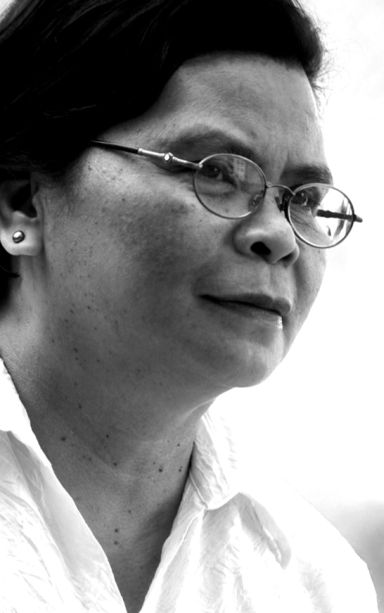
DELACERNA
The mood for the coming feast of Santo Niño is set by the song “Bato-Balani sa Gugma” (Magnet of Love) aired over the radio and television, and sung in all the eleven masses at the Basilica del Santo Niño. The first time I heard the song in the 1990’s I was moved by the melody and the lyrics. It struck me as a lullaby, and the dominance of harp enhances the soothing effect of the song. I inquired from my friends who are historians and cultural workers about the origin of the song, but no one could give me an answer.
Then years after I met a priest who just arrived in Cebu for a new assignment during a Sinulog Agape lunch of Legal Alternatives for Women Center, Inc. (LAW Inc.). He said that when he heard Bato-Balani for the first time, he could not understand what he felt, he was lifted. I told him it’s a kind of lullaby for after all we are celebrating the feast of a Divine Child.
Recently, thanks to the resourcefulness of Leo Lastimosa in his program “Arangkada” over DYAB Teleradyo, a lot of information about “Bato-Balani sa Gugma” surfaced with studies and old documents as sources. The more popular name of the song is “Gozos” – gozo was a popular song form in Spain in honor of the Blessed Virgin which was used since the 5th century and was brought to the Philippines by the missionary friars.
“Bato-Balani sa Gugma” is a song of pasalamat (thanksgiving) for all the blessings and pangilaba (supplication) for more graces to cope with problems, illness and other obstacles. The word pangilaba is in the original text and this means a more profound prayer that the supplicant is almost in tears in expressing his/her petition. The lyrics are historical as they give an account of how the Christian faith was brought to the islands. It even mentions the expedition of Legazpi and the Spanish soldier who found the burned image of the Santo Niño from the ruins of Pasil after it was burned.
In 1985, the hymn “Bato-Balani sa Gugma” became institutionalized after the council meeting was held by the Archdiocese of Cebu to brainstorm on how to make the celebration of the feast of Santo Niño more meaningful and lasting. The feast of Santo Niño was then celebrated with a mass, and after the mass people just left and only the candle dancers performed the petitions of the devotees. By that time, the Sinulog festival, the street dancing component of the fiesta, was on its fifth year. People’s attention was more focused on the street dancing and less on the religious dimension of the fiesta.
It was agreed that there be a ritual – waving of the hand – while singing the gozos. The music of “Bato-Balani” soothes and lifts the soul, enhanced by the beautiful strains of the harp and the soulful rendition of the choir. There is no known composer of the song but definitely he was a Sugbuanon who was so inspired by his faith.
The rendition we hear today was arranged and recorded by Mr. Elvis Sommosot, a member of the popular singing group in Cebu in the 1980’s and 1990’s called SAKDAP. This rendition would come down in history as the official song of the Feast of Santo Niño. During the concluding mass of the 51st International Eucharistic Congress at the SRP grounds in January 2016, the refrain of the gozos “Bato-Balani sa Gugma” was used as the response in the Prayers of the Faithful with everyone waving their hands while singing the refrain including Cardinal Tagle and the other foreign participants. It was very touching to watch a million faithful praying and singing, surrounded by the mountains and the sea.
I met Elvis Sommosot in 1991 when he graced my culminating activity with the fourth year high school Social Studies class in UP Cebu High School as one of the judges of the protest song contest in the concert dubbed “Peace Perspectives.” The concert was a form of protest of the ongoing Gulf War.
His presence challenged and excited the senior high students. I thank and congratulate Elvis for this beautifully arranged and recorded rendition of “Bato-Balani sa Gugma.” I hope he would do more arrangements and recording for the coming quincentennial of the coming of Christianity in the Philippines in 2021.
While we have “Bato-Balani sa Gugma” to help us reflect the spiritual dimension of the feast of Santo Niño, we have more Sinulog music to add to the beat and the pulse of the festival wherever we go. For this, we are so blessed to have all this music and on our part let us honor these blessings by our proper behavior.